Taping the shoulder
Impingement syndrome is one of the most frequent diagnoses of shoulder complaints. Pain in the shoulder is caused by trapped tissue structures, such as muscles, tendons and bursas, underneath the shoulder. The pinching of one of these structures is called impingement.
The shoulder joint is a joint prone to injury. The shoulder consists, among other things, of a shoulder blade and the humerus (head). From the shoulder blade, the shoulder capsule is formed, which consists of the acromion, the coracoacromial ligament and the processus coracoideus.
The normal space between the shoulder blade and the head of the humerus is 1 cm, but due to the impingement syndrome, this space is often less.
Get started with these items to tape your shoulder
-
CureTape® Classic Kinesiology Tape
Bestseller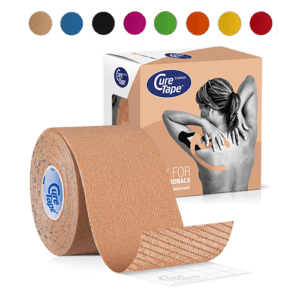 $19.95
In stockSelect options This product has multiple variants. The options may be chosen on the product page
$19.95
In stockSelect options This product has multiple variants. The options may be chosen on the product page -
CureTape® Sports Extra Sticky Kinesiology Tape
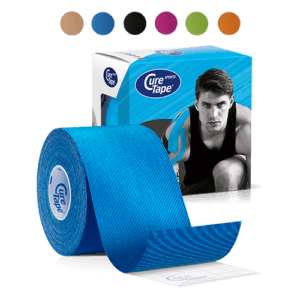 $21.95
In stockSelect options This product has multiple variants. The options may be chosen on the product page
$21.95
In stockSelect options This product has multiple variants. The options may be chosen on the product page -
Standard scissors
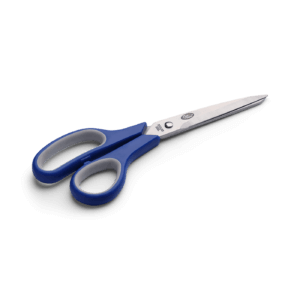 $14.95
In stockAdd to cart
$14.95
In stockAdd to cart -
CureTape® Pre-Tape Spray
 $21.95
In stockAdd to cart
$21.95
In stockAdd to cart
Causes of shoulder impingement can be:
- Ageing, which causes tendons to thicken or the structure to change.
- Overloading, which causes irritation of the bursa.
- Incorrect posture or shortened muscles in the shoulder region.
- A fall, which has damaged structures.
- Problems with the mobility of the capsule (too short or too long).
- The shoulder head moves upwards due to problems in the rotator cuff muscles.
Symptoms of impingement:
Because the cause of impingement syndrome can vary, the symptoms are also experienced in different ways. Commonly heard pain symptoms (stabbing or nagging pain) are:
- On the outside of the shoulder that can also radiate into the upper arm.
- When lifting the arm in a sideways movement; the pain is worst at 90 degrees or in the final movement.
- During rotating movements of the humerus (for example, when putting on a jacket).
Video tutorial: taping shoulder impingement

Taping in case of impingement syndrome
Within the Kinesiology taping Concept, there is a taping application which can relieve pain, increase mobility and restore function.
This taping application consists of three different tapes, each of which can also be used separately in the treatment of injuries and complaints in the shoulder region.
Watch our new instruction video, in which the application of Kinesiology taping for shoulder impingement is explained. The steps of this application are also clearly described below.
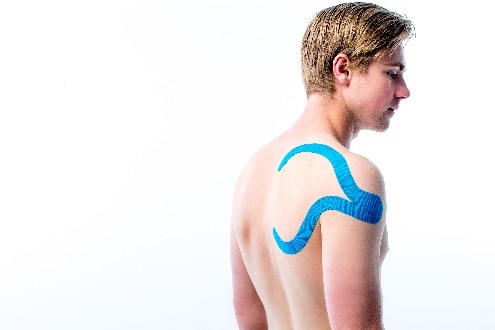
First tape: subscapularis muscle
The subscapular muscle is responsible for the inward rotation (endorotation) of the humerus.
Cut an Y-tape and apply the base of the tape in a neutral position, ventral to the midline of the deltoids. Bring the shoulder into protraction (move the shoulders towards the chest) and follow the shape of the shoulder blade with the two strips.
This tape has a sedative effect. The subscapular muscle plays an important role in frozen shoulders.
The movement problem is related to the scapula-thoracic friction area; the pain is projected into the area around the shoulder head.
Second tape: trapezius m. pars descendens
The trapezius pars descendens muscle is the upper part of the trapezius muscle, which is responsible for raising the shoulder blades and rotating the shoulder blade outwards (exorotation). Apply an I-Tape starting from the shoulder head and running towards the linea nuchae. While doing so, lower the shoulders and bring the cervical spine into hetero lateroflexion.
This tape has a sedative effect and is often used in daily practice for tension headaches.
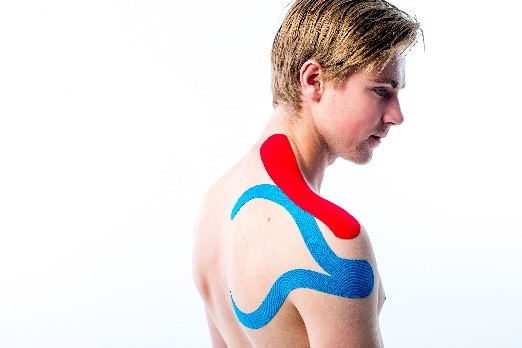
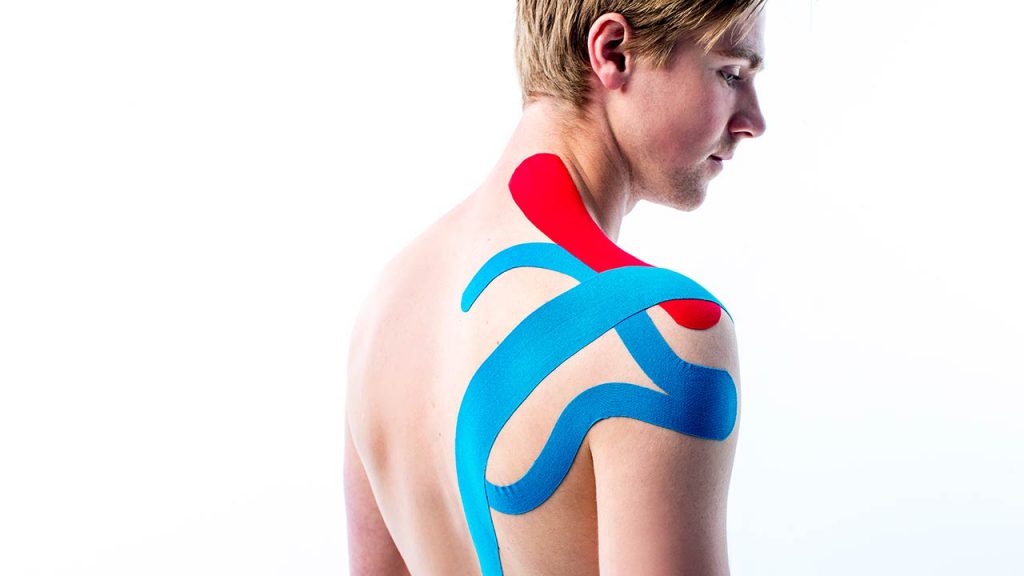
Third tape: trapezius m. pars ascendens
The trapezius muscle pars ascendens allows the shoulder to move downwards and is one of the most important shoulder blade stabilisers.
This tape application is a facilitating tape (activating). The base of the tape is applied at the level of the Th12. Have the client assume an active position with the shoulder slightly backwards and follow the edge of the trapezius in the direction of the spina scapula (shoulder blade ridge).
(CAUTION: if you apply this tape the other way round, it has a relaxing effect on the trapezius!)
For the treatment of impingement syndrome a combination of these 3 tapes is recommended.
More information:
- Request a CureTape® sample pack for free »
- Continue reading about CureTape kinesiology tape and it’s effectiveness »
- Browse through the CureTape products in our webshop »
- Continue reading about kinesiology taping instructions »
Please note that applications provided on our website are not clinically proven. All mentioned applications are based on extensive evaluation and case studies with licensed physiotherapists and/or other health professionals.
Attention: Mentioning source is mandatory, when using the content on this page.

